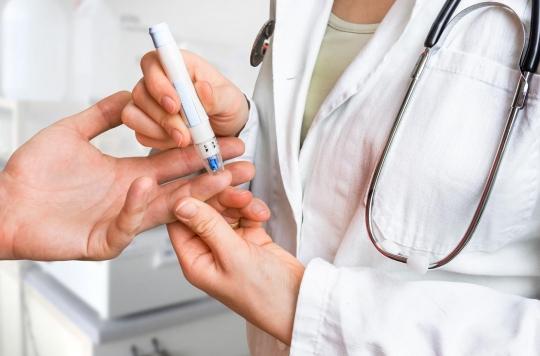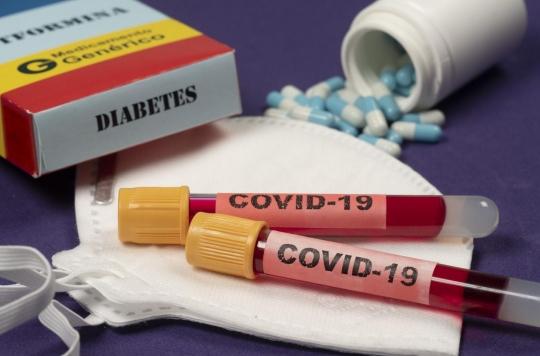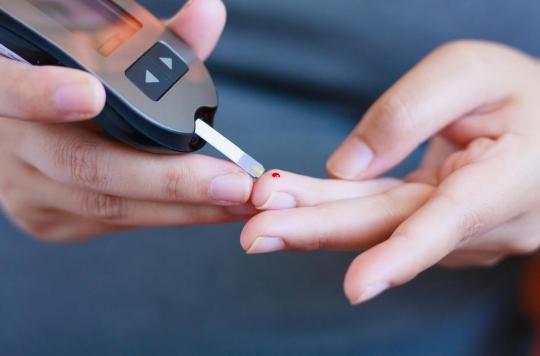The definition of diabetes is simple. It is a disorder in the use and storage of blood sugar that results in excess sugar – glucose – in the blood, called hyperglycemia. The editorial staff of Pourquoi Docteur is in Nantes, to give you, from Wednesday to Saturday, the latest information, during this congress devoted to this disease, revealed by the best French specialists.

The numbers are simple: Above 1.26 grams of glucose per liter of blood, you have diabetes. As the normal is between 0.70 and 1.10 grams, we invented a pre-diabetes between 1, 1 and 1, 24, which does not correspond to anything specific.
This notion of pre-diabetes only exists in the minds of doctors who want to motivate their patients, to whom it is easier to talk about pre-diabetes or a tendency to diabetes than to terrorize them with a diagnosis that is far from trivial. , although at the time of wearing it, there is no sign of this disease, the addition of which pays very long (15 – 20 years) after diagnosis if left unchecked.
We are indeed talking about the number of diabetics, of a true silent epidemic, which affects millions of people in France, many of whom are “pre-diabetic” and therefore ignore it. It is a worrying situation because we will have to talk about life efforts, in unmotivated patients, and often in love with inactivity and good food.
First treatment: be careful …
It is important not to take drugs as soon as the diagnosis made by the blood test. Because to fight diabetes at the beginning, doctors – theoretically – never start by giving drugs, but rather explain that, to have less sugar in the blood, you have to start by:
- 1 Bring as little sugar as possible to the body, therefore eat less (sugar turns into fat in the body and vice versa) and above all less sweet; by being wary of hidden sugars like rice and pasta.
- 2 By “burning” as much sugar as possible, that is to say by exercising
Simple things, but unloved by our civilization of leisure and opulence, which leaves a beautiful life expectancy for drugs, however useless at this stage of the disease.
Simple and precise measurement of blood sugar
We measure what is called blood sugar. A simple exam that everyone knows …
A small prick on the fingertip is enough. But it is a snapshot, a photo that is not always faithful. An example: a prolonged effort on an empty stomach allows to have normal figures and therefore misleading … Translation: those who did not want anyone to suspect their diabetes (in the event of an insurance file for example) deprived themselves of eating the day before and exercised before the blood test, to have normal numbers
If the photo is not perfect, the film had to be invented! The diabetes movie exists. This is another, less well-known dosage called glycated hemoglobin. A very complicated name, but for a simple technique that every diabetic should know.
Present in red blood cells, hemoglobin, which carries oxygen in the blood, has the particularity of fixing sugar. The higher the blood sugar, the more sugar bound to hemoglobin.
The normal rate observed in the non-diabetic oscillates between 4 and 6%.
Determination of HB1C, the result is expressed in%
This assay makes it possible to know the history of blood sugar during the three months preceding the examination. A simple quarterly dosage therefore makes it possible to precisely follow the evolution of the disease and the effectiveness of the treatment.
The normal rate observed in the non-diabetic oscillates between 4 and 6%.
From what figure should we be worried?
The High Authority for Health has issued recommendations on the target objectives of HbA1c according to the patient’s profile:
- type 2 diabetes, most cases: less than 7%
- type 1 diabetes: between 7% and 7.5%
.













-1587038876.jpg)

